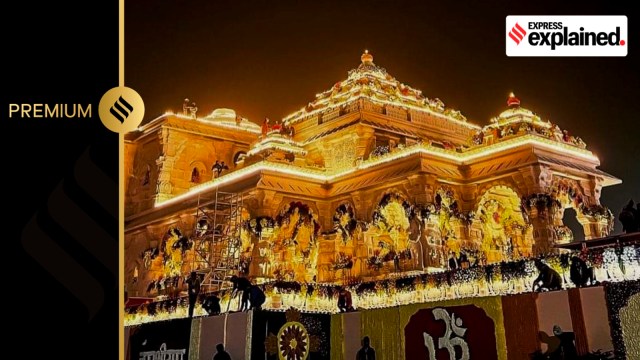January 23, 2024
Ram Temple at Ayodhya: A Two-Century Odyssey, Marked by Milestones
Introduction:
• The quest for a grand temple at Ayodhya dedicated to Lord Ram has spanned over two centuries, leaving an indelible mark on Indian politics. This historical journey, fraught with bloodshed and contentious events, has significantly shaped the socio-political landscape of the nation.
1. Marathas’ Appeal and the 1822 Dispute
• In 1751, the Marathas sought control of Ayodhya from the Nawab of Awadh, sparking the early seeds of the Ram Janmabhoomi movement. The dispute, as per judicial records, dates back to 1822 when a mosque built by Babur was claimed to stand on Lord Ram’s birthplace.
2. Clash of 1855 and Subsequent Developments
• A violent clash at the Hanuman Garhi temple in 1855 escalated tensions. The 2019 Supreme Court judgment highlights the capture of Janmasthan by Hindus on that fateful day. The coexistence within the mosque-temple complex and subsequent disputes during British rule are also noted.
3. Events in the Late 19th and Early 20th Century
• In 1885, Mahant Raghubar Das’s plea to build a Ram temple within the complex was dismissed, citing historical justice challenges. In 1949, demands for a temple gained momentum, and the idol of Ram Lalla was placed in the mosque, leading to political and legal conflicts.
4. Rise of Political Movements (1980s)
• The 1980s witnessed a surge in political activism. In 1984, the Vishwa Hindu Parishad (VHP) announced a movement for the liberation of Ram Janmabhoomi, setting the stage for subsequent developments. The Ram Janaki Yatra in 1984 and the opening of locks at Babri Masjid in 1986 marked pivotal moments.
5. Rath Yatra, Demolition, and Legal Proceedings
• The Rath Yatra led by LK Advani in 1990 and the subsequent demolition of the Babri Masjid in 1992 created seismic shifts in Indian politics. Legal proceedings followed, including the Acquisition of Certain Area at Ayodhya Act in 1993 and the Liberhan Commission report in 2009.
6. Legal Resolutions and Construction
• The Allahabad High Court’s 2010 verdict divided the disputed land, setting the stage for further legal challenges. In 2019, the Supreme Court awarded the entire land to the Hindu petitioners, paving the way for the construction of the Ram temple. The Shri Ram Janmabhoomi Teerth Kshetra Trust, established in 2020, oversaw the inauguration on January 22, 2024.
Conclusion:
• The journey of the Ram Janmabhoomi movement unfolds as a complex tapestry of historical, political, and legal events spanning over two centuries. Its impact on Indian society remains profound, shaping the course of the nation’s narrative. The culmination in the inauguration of the Ram temple signifies a pivotal moment in this enduring saga.
January 30, 2025
January 20, 2025
January 14, 2025

